Chapter 3 BUILDING AN EVACUATION PLAN FOR A PERSON WHO IS BLIND OR HAS LOW VISION
OCCUPANT NOTIFICATION SYSTEMS
No Special Requirements. People who are blind or have low vision can hear standard building fire alarms and voice announcements over public address systems that warn of a danger or the need to evacuate or that provide instructions. Therefore, no additional planning or special accommodations for this function are required.
Is There a Usable Circulation Path?
A circulation path is considered a usable circulation path if it meets one of the following criteria:
-
A person with disabilities is able to travel unassisted through it to a public way.
-
A person with disabilities is able to travel unassisted through that portion of the circulation path necessary to reach an area of refuge.
An area of refuge is a space that serves as a temporary haven from the effects of a fire or other emergency. A person who is blind or has low vision must be able to travel from the area of refuge to the public way, although such travel might depend on the assistance of others.
Special Note 5
A person who is blind or has low vision needs to know if there is a usable circulation path from the building. If there is not a usable circulation path, then the personal emergency evacuation plan for that person will require that alternative routes and methods of evacuation be put in place.
For People with Disabilities, Which Circulation Paths Are Usable, Available, and Closest?
Exits should be marked by tactile signs that are properly located so they can be readily found by a person who is blind or has low vision from any direction of approach to the exit access.
Where not all circulation paths are usable by people with disabilities, the usable circulation paths should be identified by the tactile international symbol of accessibility:
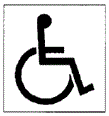
The location of exit signage and directional signage for those with visual impairments is clearly and strictly specified by codes. The requirements include but are not limited to the type, size, spacing, and color of letters for visual characters and the type, size, location, character height, stroke width, and line spacing of tactile letters or braille characters. The specific code requirements are included in Annex C.
Special Note 6
It may be practical to physically take new employees who are blind or have low vision to and through the usable circulation paths and to all locations of directional signage to usable circulation paths. In addition, simple floor plans of the building indicating the location of and routes to usable circulation paths should be available in alternative formats such as single-line, high-contrast plans. These plans should be given to visitors who are blind or have low vision when they enter the building so they can find the exits in an emergency. Tactile and braille signs should be posted at the building entrances stating the availability of the floor plans and where to pick them up. Building security personnel, including those staffing the entrances, should be trained in all accessible building evacuation systems and be able to direct anyone to the nearest usable circulation path.
Special Note 7
The personal evacuation plan for a person who is blind or has low vision needs to be prepared and kept in the alternative format preferred by that person, including but not limited to braille, large type, or tactile characters.
Which Paths Are Usable Circulation Paths?
Tactile directional signs that indicate the location of the nearest usable circulation path should be provided at all circulation paths that are not usable by people with disabilities. It may be practical to physically show new employees who are blind or have low vision where all usable circulation paths are.
Special Note 8
Where tactile directional signs are not in place, it may be practical to physically show new employees who are blind or have low vision where all usable circulation paths are located. Building management should consider installing appropriate visual, tactile, and/or braille signage in appropriate locations conforming to the code requirements in Annex C. Installing such signage is generally not expensive. Building owners and managers may be unaware that there is something they can do to facilitate the safe evacuation of people who are blind or have low vision.
A new technology in fire safety generically called “directional sound” is on the market. Traditional fire alarm systems are designed to notify people but not necessarily to guide them. Directional sound is an audible signal that leads people to safety in a way that conventional alarms cannot, by communicating the location of exits using broadband noise. The varying tones and intensities coming from directional sound devices offer easy-to-discern cues for finding the way out. As soon as people hear the devices, they intuitively follow them to get out quickly. While not yet required by any codes, directional sound is a technology that warrants investigation by building services management.
Can People Who are Blind or Have Low Vision Use the Circulation Path by Themselves?
A circulation path is considered a usable circulation path if it meets one of the following criteria:
-
A person who is blind or has low vision is able to travel unassisted through it to a public way.
-
A person who is blind or has low vision is able to travel unassisted through that portion of the usable circulation path necessary to reach an area of refuge.
An area of refuge serves as a temporary haven from the effects of a fire or other emergency. A person who is blind or has low vision must be able to travel from the area of refuge to the public way, although such travel might depend on the assistance of others. If elevation differences are involved, an elevator might be used, or the person might be led down the stairs.
Will a Person Who is Blind or Has Low Vision Require Assistance to Use the Circulation Path?
Not all people who are blind or have low vision are capable of navigating a usable circulation path. It is important to verify that a person who is blind or has low vision can travel unassisted through the exit access, the exit, and the exit discharge to a public way. If he or she cannot, then that person’s personal emergency evacuation plan will include a method for providing appropriate assistance.
Generally, only one person is necessary to assist a person who is blind or has low vision. A practical plan is to identify at least two, ideally more, people who are willing and able to provide assistance. Common sense tells us that a specific person may not be available at any given time due to illness, vacation, off-site meetings, and so on. The identification of multiple people who are likely to have different working and traveling schedules provides a much more reliable plan.
Who Will Provide the Assistance?
Anyone in the Office or the Building
People with visual impairments who are able to go up and down stairs easily but simply have trouble finding the way or operating door locks, latches, and other devices can be assisted by anyone. A viable plan may simply be for the person with a visual impairment to be aware that he or she will need to ask someone for assistance.
Specific Person(s) in the Office or the Building
-
Friend or co-worker
-
Relative
-
Supervisor
-
Building staff
-
Floor safety warden
-
-
First responders
-
Floor safety warden
-
Fire fighter
-
Police officer
-
Emergency medical services: emergency medical technicians (EMTs), ambulance personnel
-
What Assistance Will the Person(s) Provide?
Guidance
-
Explaining how to get to the usable circulation path
-
Escorting the person who is blind or has low vision to and/or through the circulation path
Minor Physical Effort
-
Offering the person an arm or allowing the person to place a hand on your shoulder and assisting the person to/through the circulation path
-
Opening doors in the circulation path
Waiting for First Responders
Generally speaking, a person who is blind or has low vision will not need to wait for first responders. Doing so would likely be a last choice when there is an imminent threat to people in the building. While first responders do their best to get to a site and the particular location of those needing their assistance, there is no way to predict how long any given area will remain a safe haven under emergency conditions.
Where Will the Person(s) Start Providing Assistance?
From the Location of the Person Requiring Assistance
Does the person providing assistance need to go where the person who is blind or has low vision is located at the time the alarm sounds? If so, how will he or she know where the person needing assistance is?
-
Phone
-
PDA
-
E-mail
-
Visual
-
Other
From a Specific, Predetermined Location
-
Entry to stairs
-
Other
When Will the Person(s) Provide Assistance?
-
Always
-
Only when asked
-
Other
How Will the Person(s) Providing Assistance Be Contacted?
-
Face to face
-
Phone
-
PDA
-
E-mail
-
Visual
-
Other




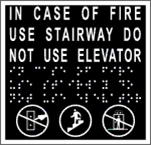
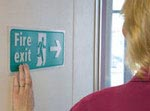
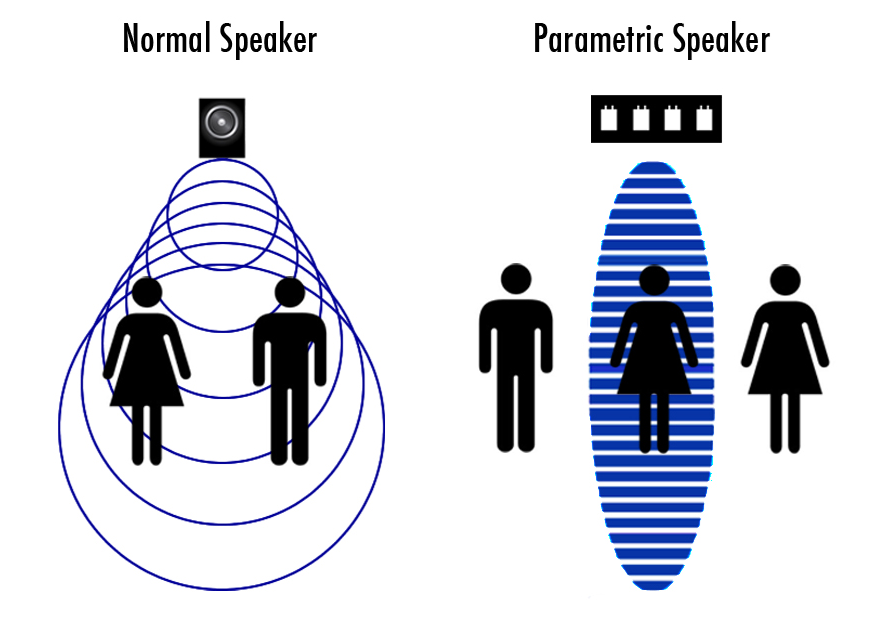
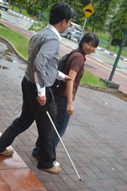

User Comments/Questions
Add Comment/Question